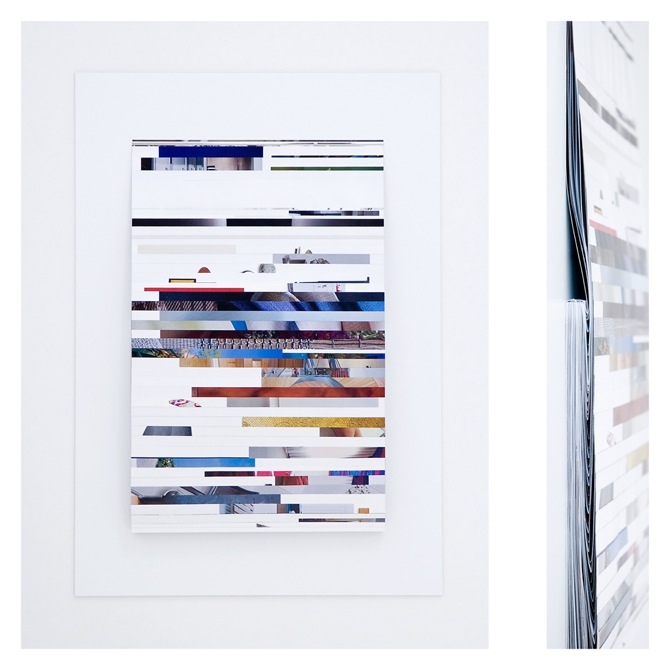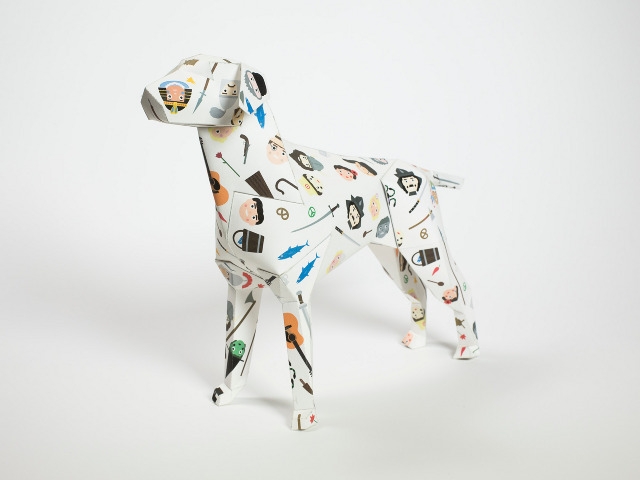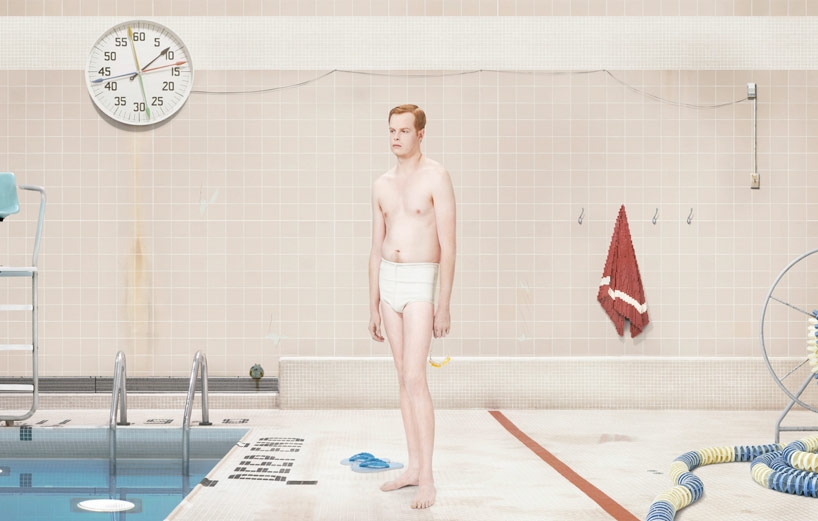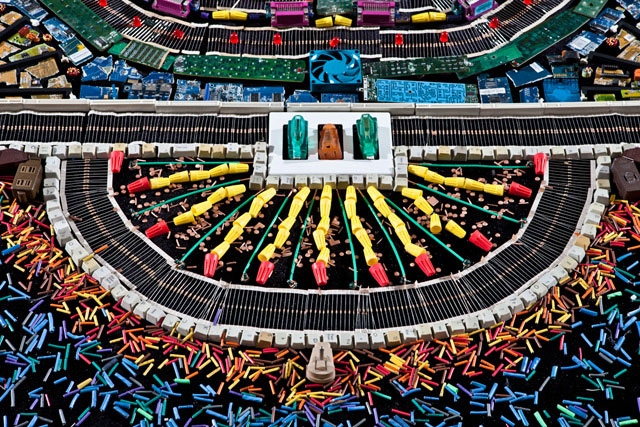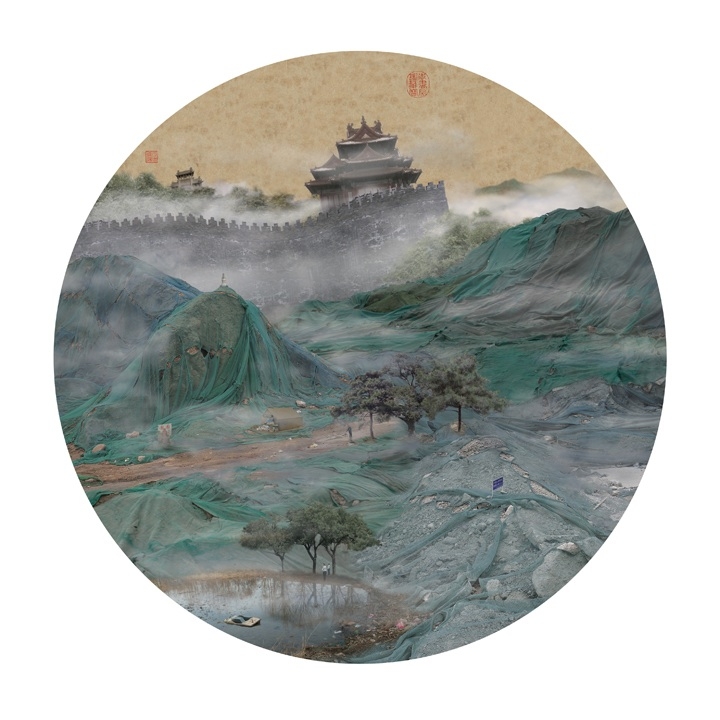Gemis Luciani's meticulous collages take the paper detritus meant for the recycling bin and turns it into incredible sculptures. Some of his pieces are carefully folded and hung design magazines; others are made from the often annoying but sometimes useful bit of near obsolescence, the telephone book.
Triangulation has more info on individual pieces.





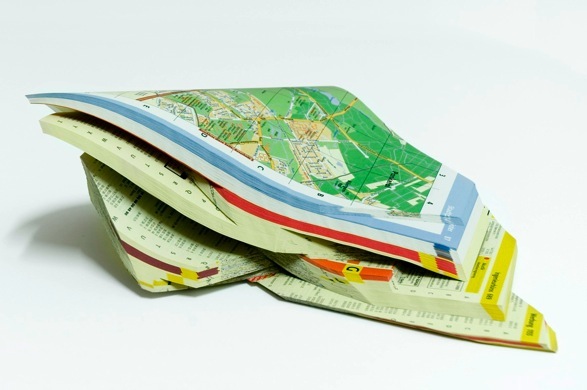

We're not 100% sure which part of the typewriter artist Gabriel Dishaw used to give his "Pgymy C3P0" bust those golden head spikes, or what kind of Nikes he used for "Air Vader's" helmet, but we do know his series is much more interesting fan art than another creepy piece of Boba Fett fan fiction. In addition to "Air Vader" and "Pygmy C3P0," the series is rounded out by "Samurai Vader," a black-clad two-part bust complete with metal horns. [images courtesy of the Gabriel Dishaw, via Designboom]



Back in March, the National revealed the cover art for its new LP, Trouble Will Find Me, a black and white image showing the top of a woman's head inside some kind of mirror system. That image is actually a scene from an installation staged at RISD in 2003 by the artist Bohyun Yoon. The installation, called Fragmentation, featured a man and woman lying nude with four mirror panels spread evenly from their ankles to head. By presenting "depersonalized" human bodies Yoon intended to draw a parallel between modern science and the consequences of plastic surgery on the human form.
The National's sixth album, Trouble Will Find Me, will be released by 4AD on May 20, and is currently streaming on iTunes. 

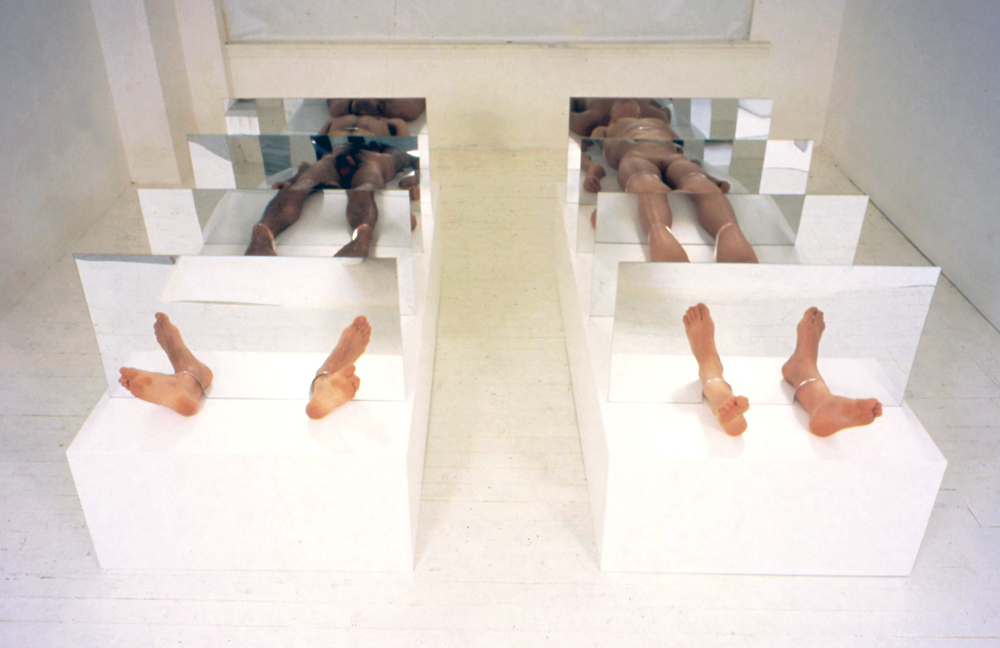
In short, Gerald is a paper dog, originally concepted in 2008 for the rebranding of UK design studio Lazerian. After much trial and error, Lazerian's Liam Hopkins and 3D designer Richard Sweeney came up with a pattern that could be easily reproduced, handcut, folded, and glued into a free standing dog. Anyone can make Gerald with the blueprint, sharp knife, glue, and "a healthy degree of patience." Eventually, a small dog version was developed with just nine panels, while the studio created an 88-component larger version for itself. Gerald is based on the look of an Italian gun dog, which is perhaps why he looks so eager, loyal, and a bit hungry.
After a quick sell out of the flatpack at design events, the designers played with customizing their own Geralds, then launched the Gerald Project in 2011, shipping out flat dogs to their fave artists, designers, and creative folk.
Eric Trine is, in his own words, "a maker of things." The Portland, Oregon-based MFA candidate is tireless, and lately has been cranking out an inspiring series of stacked sculptures made of a combination of found objects and forms he has built in his studio. If these are the "things" he's referring to, we say keep on stacking, Eric.
Contact Eric for comissions of custom furniture or arts and crafts.
The new collaboration between LEGO sculptor Nathan Sawaya and photographer Dean West requires a careful eye. The pair's latest series of photos features travel postcard-inspired postures and composition, with hidden hyperrealistic interruptions in the form of LEGO sculptures. Depending the scene, the LEGO sculpture can appear as part of the scenery, as a auxiliary prop, or even part of the wardrobe. [via designboom]

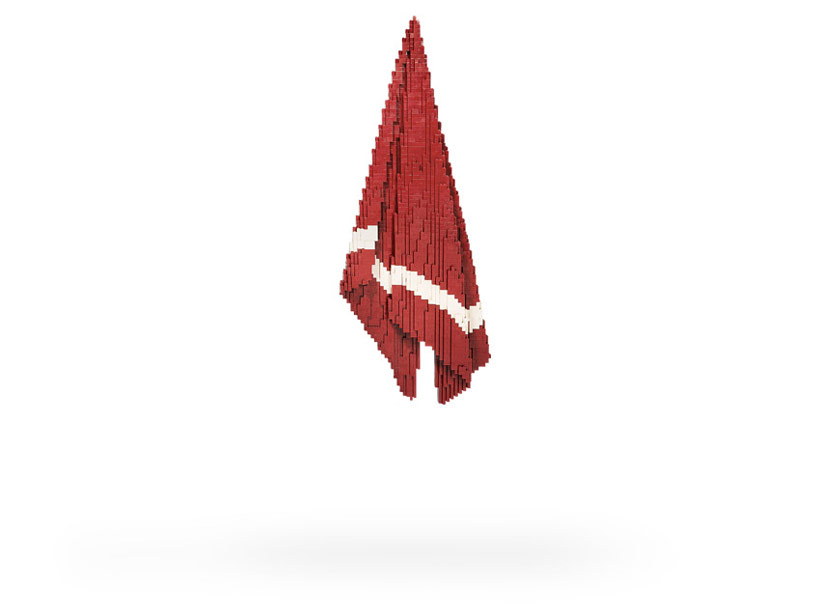
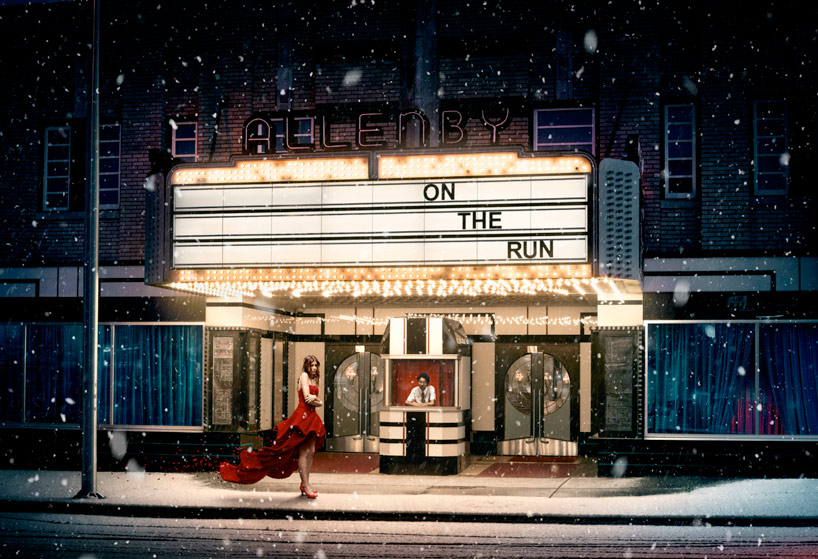


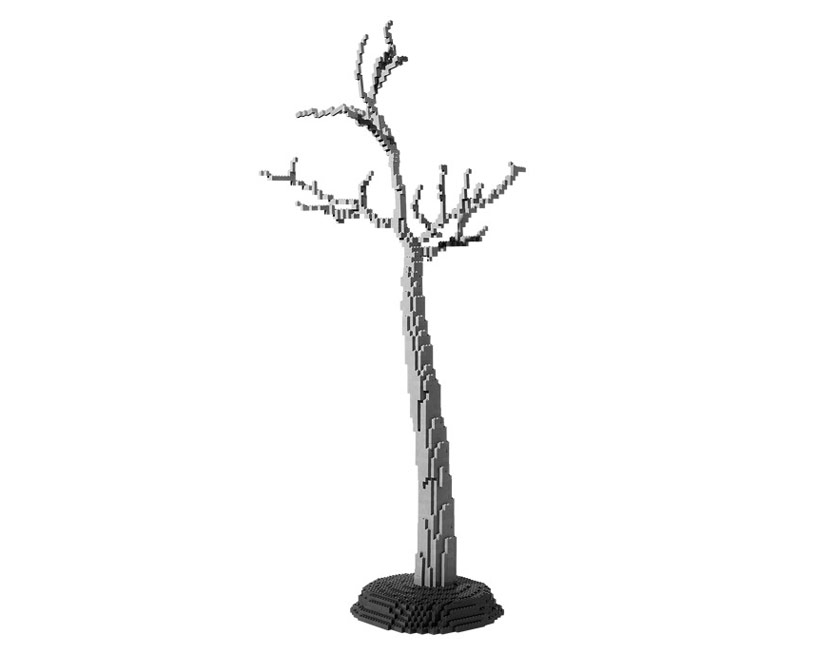
Federico Uribe's sculptural work begins with something small. He starts with small found objects like pieces of wood or plastic and renders either detailed figures, like a lion head or a full cow, or formless textural pieces that explore the coloring of each tiny object. His "Tapete" (carpet) sculpture falls into the latter category. Uribe uses the surprisingly colorful innards of deconstructed computers to create an intricate pattern of discarded cables, keyboard keys, and circuit boards. [via Colossal]
With all the blood, sweat and tears bands put into making an album, it follows that they'd like to present their music in a package that will stand the test of time. But encasing your album in a block of sugar, that's a statement of a different kind.
The duo Beacon (Thomas Mullarney and Jacob Gossett) met in school at Pratt, and the former art students have teamed with sculptor buddy Fernando Mastrangelo on the case for a deluxe edition of their upcoming album, The Ways We Seperate. Mastrangelo has cast a piece of all white sugar with the acronym for the album title debossed on the front. On the back, there's an inlay where the precious vinyl will rest. You will want to keep this away from children, pots of coffee, and open flames, we think.
The Ways We Separate is out on Ghostly International on April 30th.


A decade ago, Matthew Hoffman's "You Are Beautiful" campaign began as a sticker project in an edition of just 100. Milions of stickers later, he began producing installations and public murals around the same theme. This year, with help from Johalla Projects, he'll bring the words in 8-foot-tall wooden format to the fifth annual 35 Denton Music Festival in Denton, TX March 7–10, 2013. The 100-ft.-long word sculpture will be mounted on top of the Dan’s Silverleaf venue, in downtown Denton.
The unwanted presence of garbage is a universal concern. That presence can mean anything from empty candy wrappers and packs of cigarettes tossed on the sidewalk, to massive landfill mountains made of trash. Artists Carly Fischer and Yau Lu have approached the concept of an unending stream of rubbish in two very different ways.
Fischer explores the idea in a way that might seem counterintuitive to most works about garbage: she actually recreates common litter like beer cans, old TVs, and neglected construction materials using only bright papers. She pays special attention to leave the original logos intact, almost as a way of addressing her sculptures. The work is also shown in charged postures: either in sealed glass cases, or scattered on the floors of galleries.
An early series by photographer Yao Lu recreated historical images from the Song dynasty by altering photos of trash. The new context managed to connect the landfill scenes with the industrialization of his home country of China, and his new work continues in a similar political direction. Not unlike Fischer's hyperrealistic sculptures, Lu's landscapes are not what they first appear. He swaps idyllic mist for inevitable smog, and the mountains that were often the subject of early Chinese art, with the massive piles of garbage he's used to seeing in landfills.
